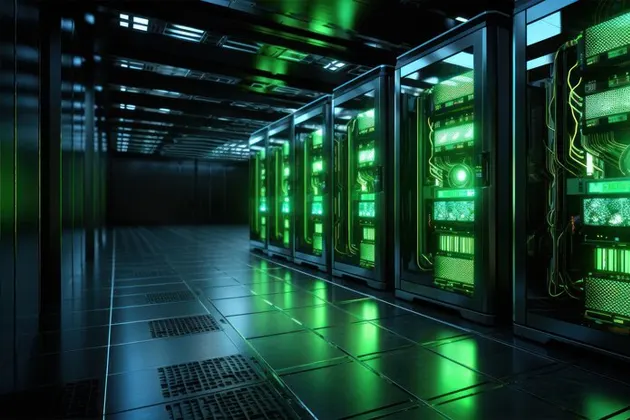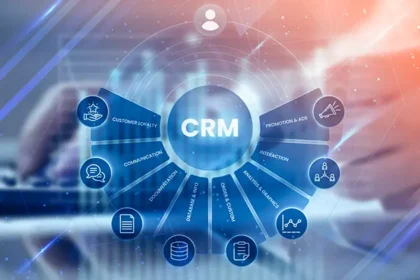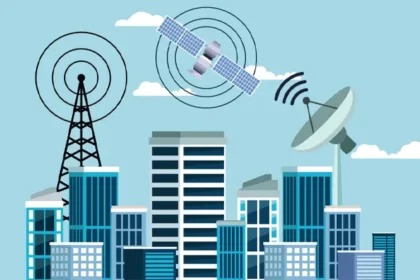How can data centers reduce their water footprints and improve sustainability?
In the current digital era, data centers play a pivotal role in our everyday lives, powering the cloud, artificial intelligence, and the Internet of Things that we depend on daily. However, while data centers enable us to engage with friends on social media and to shop, bank, and watch movies online, they have a significant environmental footprint, particularly in the amount of water they consume. Reducing water consumption in data centers can not only lower their environmental impact but can also improve operational efficiency. What are some of the innovative strategies that can improve water efficiency in data centers?
Minimizing Water Consumption
Data centers consist of large arrays of computer servers that collectively process billions of gigabytes of information, and capacity is expected to expand further as internet traffic soars. Storing and processing all this information uses significant amounts of energy, which generates heat. To prevent these systems from overheating, data centers rely on cooling systems that typically consume large volumes of water. To reduce this impact, water-wise data centers are turning to advanced cooling technologies such as air cooling and liquid immersion cooling, which are proving to be more water-efficient.
Air cooling technologies take advantage of ambient air to cool servers, reducing or eliminating the need for water-based cooling systems. This can be achieved by using fans, vents, and air conditioning to circulate ambient air and expel hot air generated by the servers as they process data.
Using ambient air for cooling, particularly in cooler climates, has several advantages. It is a proven and reliable technology that is easy to implement and can be used in both small and large facilities. It’s especially suited to data centers in cooler climates, which can take advantage of free cooling by using outside air when external temperatures allow.
The main drawback of air cooling, though, is that it can drive up energy consumption and associated costs, especially in facilities situated in warmer regions.
Liquid immersion cooling, which submerges servers in nonconductive, heat-absorbing liquids, offers another alternative cooling solution that can significantly reduce water usage. Immersion cooling allows for efficient temperature management without the need for energy-hungry cooling mechanisms such as fans.
In addition to these methods, wastewater can be reclaimed and treated for reuse in cooling towers and heat exchangers, reducing the need for freshwater inputs for cooling.
Water Reuse and Recycling: Closed Loop Solutions
Considering that a 1-megawatt data center can consume as much as 6.6 million gallons (25.1 million liters) of cooling water every year, enough to meet the daily water needs of 300,000 people, it is clear that addressing high water consumption can reduce local water stress, especially in regions facing water scarcity.
Implementing circular water solutions can significantly reduce the water demand of data centers and improve their sustainability. For example, installing closed-loop cooling systems that recirculate water can reduce water loss through evaporation, while wastewater generated within the data center can be treated and recycled for reuse in nonpotable applications such as toilet flushing, irrigation, or even cooling water.
Resource Recovery: Beyond Conservation
One standout technology for water reuse is the membrane bioreactor (MBR). This advanced wastewater treatment solution produces high-quality effluent suitable for reuse within data centers or for other nonpotable purposes. MBR not only enables water reuse but also allows for the recovery of valuable nutrients or other wastewater byproducts, which can be used to fertilize crops or enhance soils, for example.
Another way to use the thermal energy recovered from data centers is for indoor climate control and water heating. In one example, heat recovered from a data center will be used to heat 10,000 modern residential apartments in Stockholm, Sweden. The city aims to have heat recovery from data centers supplying 10% of the city’s heat by 2040. In Exmouth, United Kingdom, a leisure center uses heat recovered from a tiny data center to heat the local swimming pool, significantly cutting energy costs.
Sustainable Water Management
Sustainable water management requires a well-rounded approach, with data center managers considering the following key factors:
- Life-cycle assessment: It’s essential to evaluate the environmental impact of water use throughout the data center’s lifecycle, from construction and operation to decommissioning. This ensures that opportunities for improvement are identified at every stage, contributing to long-term sustainability.
- Community collaboration: Working with local water utilities and stakeholders fosters partnerships that can lead to sustainable water management strategies, benefiting both the data center and the surrounding community. The two cases mentioned above show how data centers have contributed to local sustainability efforts through community partnerships.
- Technological innovation: The data center industry must continuously invest in and adopt new technologies to improve water efficiency and enhance resource recovery efforts.
As data centers expand to meet the demands of our increasingly digital world, water stewardship and resource recovery will remain critical priorities. By minimizing water consumption, implementing closed-loop systems, adopting advanced treatment technologies like MBR, and collaborating with local communities, data centers can protect vital water resources and contribute to a more sustainable future.










